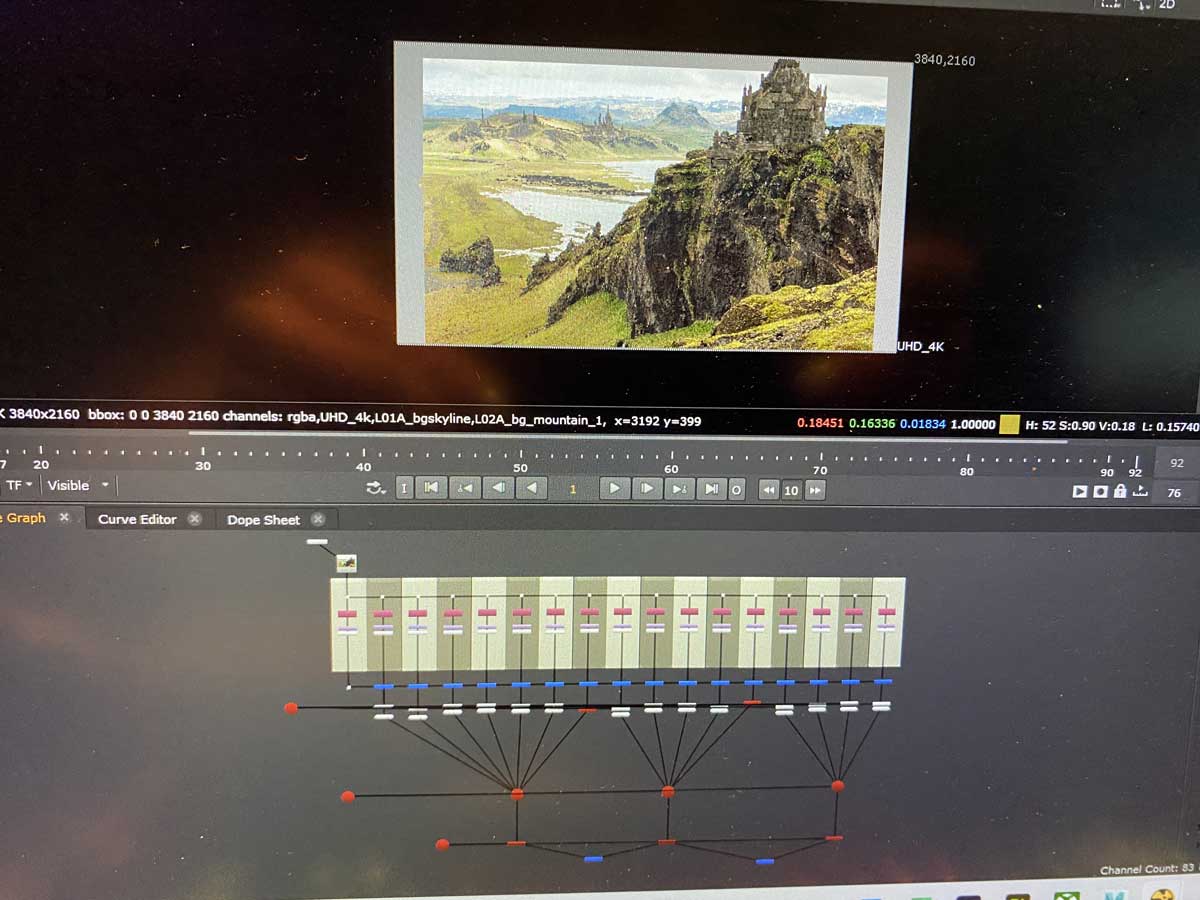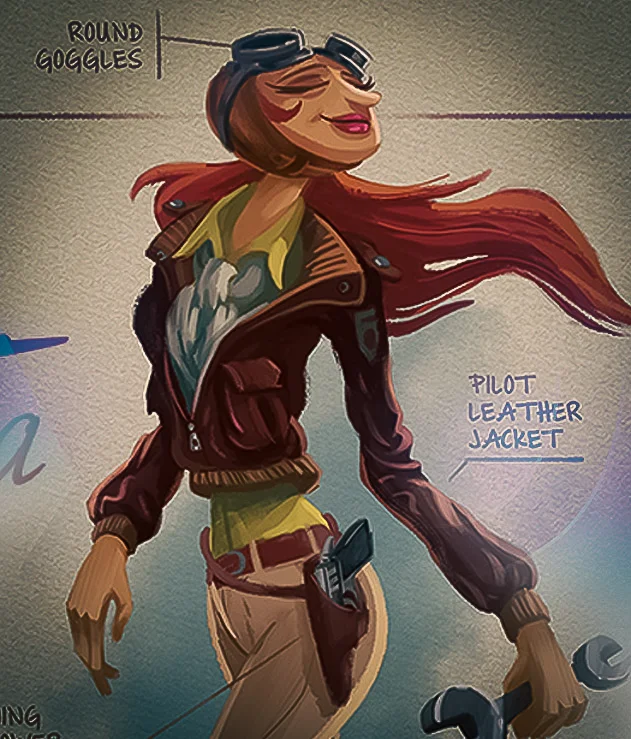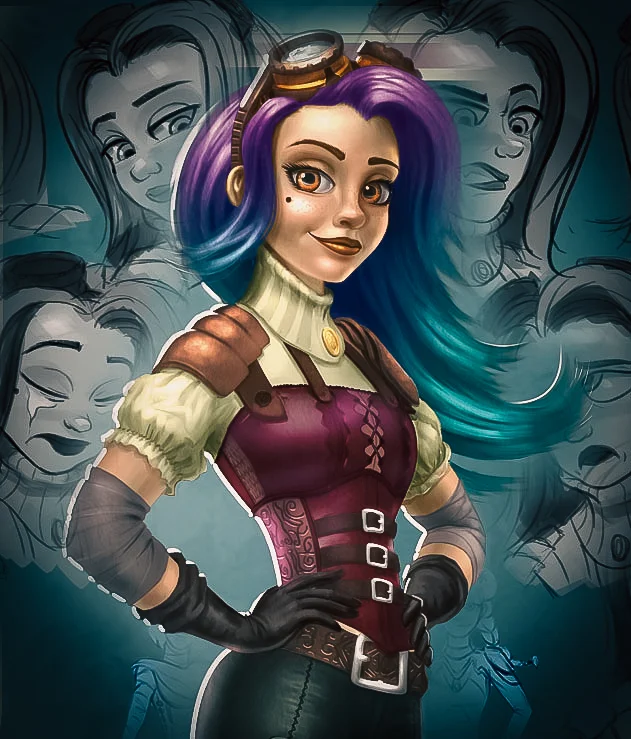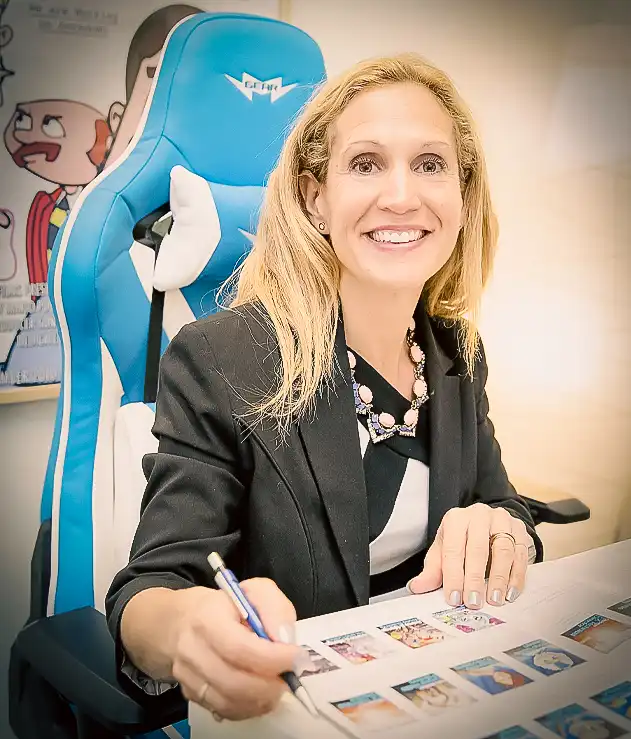 Image by: Agnes Esser, VANAS student
Image by: Agnes Esser, VANAS student
What is Virtual Production?
Have you ever wondered how movies create stunning visual effects and immersive worlds? How do filmmakers bring their wildest dreams to life on the big screen? The answer lies in the realm of virtual production, an innovative approach that combines cutting-edge technology with traditional storytelling. But what exactly is virtual production?
Virtual production is a revolutionary technique that integrates real-time rendering, virtual filmmaking, and digital production tools. It allows filmmakers to seamlessly blend physical and digital elements, creating dynamic and immersive environments that were previously unimaginable. With virtual production workflows, the possibilities for visual storytelling are virtually limitless.
Key Takeaways:
- Virtual production combines real-time rendering, virtual filmmaking, and digital production tools.
- It allows filmmakers to create seamless and immersive environments.
- Virtual production workflows offer limitless possibilities for visual storytelling.
The Evolution of Filmmaking Techniques
In the rapidly evolving landscape of filmmaking, new technologies and techniques have revolutionized the way movies are produced. One of the most groundbreaking developments in recent years is virtual production, which has emerged as a game-changer in the industry.
Virtual production combines advanced technologies such as augmented reality with traditional filmmaking to create immersive storytelling experiences. Through virtual set design, filmmakers can transport audiences to captivating worlds that were previously limited by physical constraints.
With the integration of XR technology in entertainment, virtual production opens up a world of possibilities for filmmakers. Augmented reality in film allows for real-time rendering of digital elements into the camera view, seamlessly blending the real and virtual worlds.
Virtual production has transformed the creative process, enabling filmmakers to visualize and capture scenes in a more interactive and efficient manner.
By leveraging virtual production techniques, filmmakers can pre-visualize complex shots, experiment with different visual styles, and make informed decisions in real-time. This streamlined workflow not only saves time and resources but also enhances the overall quality and impact of the final product.
Virtual production has had a profound impact on various aspects of filmmaking, from production design to post-production. Through virtual set design, filmmakers can create visually stunning and highly realistic environments, bringing their imaginative visions to life.
The integration of XR technology in entertainment has also paved the way for new storytelling techniques. Filmmakers can seamlessly blend physical and digital elements, enriching the narrative and engaging audiences on a deeper level.
The Benefits of Virtual Production:
- Enhanced pre-visualization and creative exploration
- Efficient and cost-effective production workflows
- Realistic and immersive virtual set design
- Seamless integration of physical and digital elements
- Increased collaboration and flexibility during production
As virtual production continues to evolve, filmmakers are discovering new ways to push the boundaries of storytelling. From blockbuster movies to independent films, virtual production has become an indispensable tool in creating captivating and visually stunning experiences.
The Benefits of Virtual Production
In today's fast-paced film industry, virtual production has emerged as a game-changer, offering numerous benefits that streamline the filmmaking process. By leveraging real-time rendering and digital production tools, filmmakers can now bring their visions to life more efficiently and effectively than ever before.
- Improved Pre-visualization: Virtual production allows filmmakers to pre-visualize scenes in a virtual environment, providing a realistic preview of how the final product will look. This enables directors and cinematographers to make informed decisions about camera angles, lighting, and set design, saving time and resources during the actual production.
- Faster Production Workflows: With virtual production workflows, filmmakers can work more collaboratively and seamlessly. Digital production tools facilitate real-time changes and adjustments, eliminating the need to wait for post-production processes. This accelerates the overall production timeline, allowing filmmakers to deliver high-quality projects in shorter timeframes.
- Cost Efficiency: By reducing the reliance on physical sets and location scouting, virtual production offers cost-saving benefits. Filmmakers can create virtual environments that are indistinguishable from real-life settings, eliminating the need for expensive on-location shoots. Additionally, changes can be made digitally, minimizing additional costs associated with reshoots.
- Enhanced Creative Freedom: Virtual production provides filmmakers with unprecedented creative freedom. With the ability to build virtual sets and manipulate digital environments, filmmakers can bring even the most fantastical visions to life. This opens up new opportunities for storytelling and elevates the overall visual experience for audiences.
- Efficient Collaboration: Virtual production workflows foster collaboration among different departments involved in the filmmaking process. The real-time nature of virtual production allows seamless integration of live-action footage, visual effects, and computer-generated imagery (CGI), resulting in a cohesive and visually stunning final product.
Overall, virtual production offers a range of benefits that revolutionize the filmmaking process. From improved pre-visualization to faster production workflows, the combination of real-time rendering and digital production tools enables filmmakers to create immersive and captivating experiences for audiences around the world.
Virtual Production: A New Era in Filmmaking
In recent years, virtual production has emerged as a transformative force in the film industry, revolutionizing the way movies are made. By integrating cutting-edge technologies and innovative techniques, virtual production has opened up a new world of possibilities for filmmakers.
One of the key elements of virtual production is virtual set design, which allows filmmakers to create immersive and realistic virtual environments. With virtual set design, the limitations of physical sets are no longer a barrier, giving filmmakers the freedom to create any world they can imagine. From fantastical landscapes to futuristic cities, virtual set design brings the director's vision to life with unparalleled detail.
Virtual set design completely changed the way we approach filmmaking. It allows us to go beyond the constraints of physical sets and create truly immersive worlds.
Another significant aspect of virtual production is virtual pre-visualization, which enhances the planning and creative process of a film. By using virtual pre-visualization tools, filmmakers can visualize their scenes in real-time, allowing them to make instant adjustments and experiment with different camera angles and lighting setups. This level of flexibility and control empowers directors and cinematographers to refine their vision before shooting begins, streamlining the production process and saving valuable time and resources.
With virtual production, the boundaries between physical and digital filmmaking are blurring. Filmmakers can seamlessly blend real actors and physical elements with digital environments, creating a truly immersive cinematic experience. This convergence of technology and storytelling has paved the way for a new era in filmmaking, where imagination knows no bounds.
Learning Virtual Production at VANAS
If you're aspiring to become a visual effects artist specializing in virtual production, VANAS is the ideal institution to kickstart your career. With its renowned programs and industry expertise, VANAS offers you the opportunity to delve into the exciting world of virtual production.
At VANAS, you'll have access to an innovative curriculum designed to equip you with the skills and knowledge needed to excel in the field of virtual production. Whether you're a beginner or looking to enhance your existing expertise, VANAS has programs tailored to your specific needs.
VANAS provides comprehensive training needed to thrive in the virtual production industry. The instructors are industry professionals who are passionate about sharing their knowledge and helping students succeed.
Through a combination of theoretical and hands-on learning, VANAS ensures that you gain a deep understanding of virtual production workflows, real-time rendering, and digital production tools. With state-of-the-art facilities and industry-standard software, you'll have access to the resources necessary to hone your skills.
What sets VANAS apart is its commitment to providing practical experiences and opportunities for networking within the industry. You'll have the chance to collaborate with fellow students on real-world virtual production projects, building a strong portfolio that showcases your talent and creativity.
With VANAS as your educational partner, you'll be well-equipped to pursue exciting opportunities in the virtual production industry. Whether you dream of working on blockbuster films, television shows, or immersive experiences, VANAS will guide you on your path to success.
Join VANAS today and unleash your creative potential in the world of virtual production.
Mastering Visual Effects and Virtual Production
To excel in the field of visual effects and virtual production, you need a combination of technical expertise and industry knowledge. Whether you aspire to be a visual effects artist or a virtual production professional, there are essential skills you must develop to thrive in this creative realm.
Becoming a visual effects artist or a virtual production professional requires a passion for artistry and a dedication to mastering the tools and techniques of the trade. It's an ever-evolving field that demands continuous learning and adaptability.
Here are some key areas to focus on to become a successful visual effects artist and virtual production professional:
1. Technical Proficiency
Mastering the technical aspects of visual effects and virtual production is paramount. Familiarize yourself with industry-standard software such as Autodesk Maya, Adobe After Effects, and Nuke. Understand the intricacies of compositing, motion tracking, and 3D modeling. Stay updated with the latest advancements in real-time rendering and virtual production workflows.
2. Creative Problem-Solving
Visual effects and virtual production often involve solving complex creative challenges. Develop your problem-solving skills and learn to think outside the box. Collaborate with your team to find innovative solutions and bring your artistic visions to life.
3. Attention to Detail
Paying attention to every detail is crucial in visual effects and virtual production. Develop a keen eye for spotting imperfections and inconsistencies. Strive for realism and ensure seamless integration of visual effects into live-action footage or virtual environments.
4. Collaboration and Communication
In the world of filmmaking, collaboration is key. Work closely with directors, cinematographers, and other professionals to understand their creative vision. Effective communication skills will help you translate their ideas into stunning visual effects and virtual production elements.
Being a visual effects artist or a virtual production professional isn't just about technical prowess. It's about understanding the director's vision, collaborating with the team, and creating something truly magical together.
By honing these skills, you can carve a successful career as a visual effects artist or a virtual production professional. Embrace the ever-evolving nature of this field, stay curious, and never stop learning. With dedication and passion, you can bring imagination to life through the power of visual effects and virtual production.
Harnessing the Power of Digital Matte Painting
When it comes to virtual production, the art of digital matte painting plays a crucial role in creating realistic and immersive environments. By seamlessly blending traditional painting techniques with modern technology, digital matte painters bring stunning virtual worlds to life.
Using their artistic skills and a variety of digital tools, digital matte painters create intricate backdrops that transport viewers to different times, places, and dimensions. They have the power to transform a blank canvas into a breathtaking landscape, whether it's a sprawling cityscape, a lush forest, or an otherworldly realm.
Digital matte painting is like a window to another world. It allows us to bridge the gap between imagination and reality, leaving audiences captivated by the seamless integration of the visual elements.
The process of digital matte painting involves meticulous attention to detail and a deep understanding of lighting, perspective, and composition. By combining these elements, digital matte painters can create depth and realism in virtual environments, making them indistinguishable from physical sets.
Furthermore, digital matte painting enhances the storytelling aspect of virtual production. It allows filmmakers to establish the mood, set the tone, and create a sense of place within the virtual world. Digital matte painters collaborate closely with directors and production designers to ensure that their vision aligns seamlessly with the overall narrative of the film.
Tools of the Trade
To achieve their artistic vision, digital matte painters utilize a range of tools and software. They often work with industry-standard software such as Adobe Photoshop, Autodesk Maya, and The Foundry's Nuke. These tools allow them to seamlessly integrate their digital paintings with 3D models, textured geometry, and visual effects.
Additionally, digital matte painters rely on an extensive library of reference materials, including photographs, textures, and concept art. These references serve as a foundation for their creations, enabling them to achieve a high level of realism and believability.
Career Opportunities
For aspiring artists looking to enter the world of virtual production, digital matte painting offers exciting career opportunities. With the demand for immersive and visually stunning films and television shows on the rise, skilled digital matte painters are in high demand.
Whether you choose to work as a freelancer, join a visual effects studio, or collaborate with virtual production companies, mastering the art of digital matte painting can open doors to a rewarding and fulfilling career.
- Create breathtaking virtual environments that transport audiences to new worlds.
- Collaborate with directors and production designers to bring their creative vision to life.
- Work with cutting-edge software and tools to achieve stunning visual effects.
- Become an integral part of the virtual production process, contributing to the overall storytelling.
As you navigate your career in digital matte painting, remember that continuous learning and staying up to date with the latest industry trends are paramount. Embrace new technologies, experiment with different painting styles, and push the boundaries of your creativity to harness the full power of digital matte painting in virtual production.
The Future of Virtual Production
As virtual production continues to push the boundaries of filmmaking, the future looks incredibly promising. Emerging technologies such as augmented reality (AR) and advancements in real-time rendering are set to revolutionize the industry even further.
Imagine a world where filmmakers can seamlessly blend physical sets with virtual environments, creating immersive experiences for viewers. With augmented reality in film, the possibilities are endless. From enhancing practical effects to transporting audiences to fantastical worlds, AR has the potential to elevate storytelling to new heights.
Furthermore, real-time rendering techniques are continuously evolving, enabling filmmakers to achieve stunning visuals and intricate details without the need for lengthy post-production processes. This real-time rendering technology not only saves valuable time but also allows for greater flexibility during production, empowering directors and artists to make instant creative decisions and iterate on the fly.
With virtual production, the lines between imagination and reality are blurred, and the future holds endless possibilities for creating captivating cinematic experiences. As technology progresses and virtual production workflows become more streamlined, we can expect to see even greater integration of virtual elements into our favorite films.
FAQ
What is Virtual Production?
Virtual production is a revolutionary filmmaking technique that combines real-time rendering and traditional storytelling to create a seamless and efficient creative process. It allows filmmakers to design and visualize virtual sets, incorporate augmented reality technology, and streamline production workflows.
How has Virtual Production evolved over time?
Virtual production techniques have evolved significantly over the years, transforming the way movies are made. The emergence of virtual set design and augmented reality in film has revolutionized the industry, incorporating XR technology to enhance storytelling and create immersive environments.
What are the benefits of Virtual Production?
Virtual production offers numerous benefits for filmmakers. It allows for improved pre-visualization, faster production workflows, and greater creative freedom. Real-time rendering and digital production tools have played a crucial role in revolutionizing the filmmaking process, enabling filmmakers to bring their visions to life more efficiently.
How does Virtual Production impact the film industry?
Virtual production has ushered in a new era in filmmaking, empowering filmmakers to create immersive virtual sets and enhance pre-visualization techniques. It offers the potential for cost savings, increased collaboration, and more efficient production processes, making it a game-changer in the industry.
Can I learn Visual Effects at VANAS?
Absolutely! VANAS is a leading institution that offers programs for aspiring visual effects artists specializing in virtual production. They provide comprehensive training and curriculum that prepares students for a successful career in the field.
What skills are required to become a Visual Effects artist and Virtual Production professional?
To excel in the field of Virtual Production, one must have a strong grasp of technical expertise and industry knowledge. Skills in 3D modeling, animation, rendering, and compositing are essential, along with a good understanding of visual effects principles and storytelling techniques.
How important is Digital Matte Painting in Virtual Production?
Digital matte painting plays a crucial role in Virtual Production by creating realistic and immersive environments. It involves using digital tools to paint or manipulate images and create breathtaking scenery that enhances the visual storytelling experience. It requires both artistic skills and technical knowledge.
What does the future hold for Virtual Production?
The future of Virtual Production looks promising as emerging technologies like augmented reality continue to advance. We can expect further integration of real-time rendering techniques and the development of more sophisticated tools. Virtual production is poised to reshape the filmmaking landscape, opening up new artistic possibilities and pushing the boundaries of visual storytelling.







